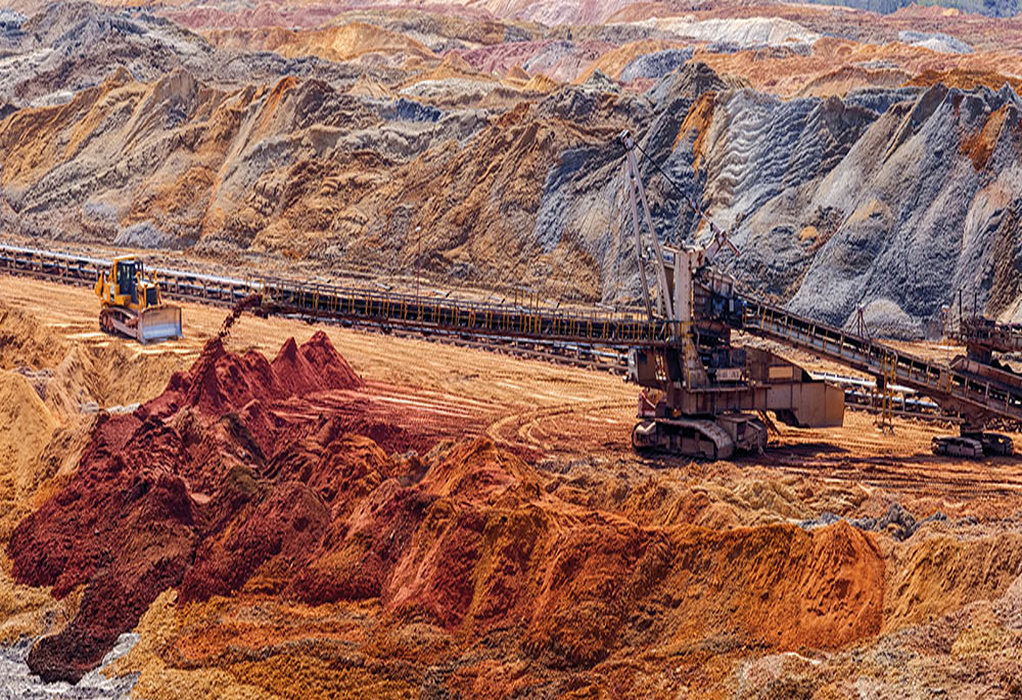The COP26 meeting held in Glasgow on climate change issues discussed accelerating action and strategies toward achieving objectives outlined in the Paris Agreement. Consequently, India has committed to increasing its non-fossil fuel energy capacity to 500 GW by 2030, reducing the economy’s carbon intensity to less than 45% in 2030 compared to 2005 levels, and achieving the target of net-zero emissions by 2070. Additionally, in 2015, India announced its Nationally Determined Contributions, including reducing its Gross Domestic Product (GDP) emission intensity by 33-35% in 2030 from 2005 levels. This commitment has been revised to a 45% reduction during COP26. Critical minerals shall play an important role to achieve these goals.
Critical minerals refer to mineral resources, both primary and processed, which are essential inputs in the production process of an economy, and whose supplies are likely to be disrupted on account of non-availability or risks of unaffordable price spikes.
These minerals tend to lack substitutability and recycling processes. In addition, the global concentration of extraction and processing activities, the governance regimes, and environmental footprints in resource-abundant countries adversely impact their availability risks.
A recent study by CSEP assesses the criticality of 23 select non-fuel minerals for India’s manufacturing sector and projects their needs for manufacturing green technologies equipment required for climate change mitigation.
The study evaluated the criticality of each mineral along two dimensions: economic importance and supply risk. It projected India’s mineral needs for renewable electricity generation and electric vehicle manufacturing, in line with its various climate change mitigation objectives over the next two decades.
The economic importance dimension measures the impact on the manufacturing sectors caused by a sudden non-availability of a mineral in the supply chain, and the supply risk dimension evaluates the vulnerability in global mineral supply chains due to the concentration of mineral extraction or processing in some countries and the quality of governance in these jurisdictions.
Our analysis suggests that niobium, lithium, and strontium have relatively high economic importance. Lithium, for example, is essential for the manufacture of batteries for electric vehicles, while niobium and strontium are needed for steel and aluminium alloys. Most minerals have some degree of substitutability, except for niobium and silver, for which there are no good substitutes. The supply risk is relatively high for yttrium and scandium, followed by niobium and silicon. Silicon is key for the manufacture of solar panels. The rare earth elements of yttrium and scandium have various uses, including alloys, superconductors, and battery technologies. India does not have the recycling capacity for most minerals except copper and iron. While there are limited technological options for recycling some minerals, there is scope for increased end-of-life recycling, as demonstrated by higher recycling rates globally.
One facet of India’s future critical mineral needs will depend on the types of clean energy technologies used in the green energy transition and the share of domestic manufacturing versus import reliance on each technology. Solar and wind power will play a major role in the clean energy transition in India, and electric vehicles are also being encouraged to reduce vehicular emissions and dependency on fossil fuels.
There will be an increase in the demand for several critical minerals as India transitions towards renewable power generation and electric vehicles. For example, copper, manganese, zinc, and indium will be required for renewable electricity generation equipment manufacturing. Likewise, the move to electric vehicles would require increasing quantities of various minerals, including copper, lithium, cobalt, and rare earth elements. However, India does not have any known reserves of nickel, cobalt, molybdenum, rare earth elements, neodymium and indium, and the needs for copper and silver are projected to be higher than India’s current reserves.
The results of this projection exercise indicate that India is not equipped to meet its green technology manufacturing requirements through domestic mining alone. Instead, imports of minerals for domestic manufacturing, or imports of the final product (embedded in these minerals), will be needed to meet its policy agenda on climate change mitigation.
While India will need to rely on imports for these technologies over the next two decades, further work must be done to better utilise the available minerals within the country for its longer-term needs. India can be better prepared for the next stage of green technology utilisation by laying the groundwork for exploring and mining. India has significant resources of nickel, cobalt, molybdenum, and heavy rare earth elements, but further exploration would be needed to evaluate the economically minable resources. The country must also focus on securing supply chains for critical minerals and acquiring foreign mineral assets to ensure a continuous supply.
India will also need to undertake serious research and build a policy framework for becoming self-reliant in clean energy and high-tech equipment by acting quickly on the exploration and mining of critical minerals and setting up investments in the downstream value chains of requisite manufacturing equipment at home.
Source: Hindustan Times
Tags: Fossil Fuel, GDP, Green Technologies, India, Minerals, Mining



Recent Posts
DNV Grants Approval in Principle for New Ammonia Bunkering Vessel Design
Proteus Launches Modular Hydrogen Fuel Cell System for Maritime Sector
Van Oord Unveils Boreas, World’s Largest and Most Sustainable Offshore Wind Installation Vessel
New methanol-fuelled vessel ‘Berlin Maersk’ to enter service
NMPA wins greentech global environment award
CMA CGM in negotiations with Indian shipyards for LNG-powered shipbuilding
L&T to Develop Green Hydrogen and Ammonia Projects in Kandla
Pan Ocean Orders Two Eco-Ready VLCCs from HD Hyundai Heavy Industries